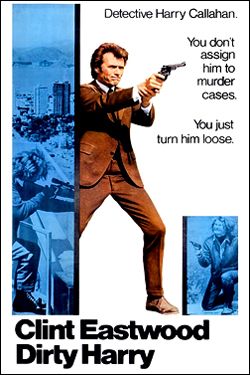Following on from The Taking of Pelham One Two Three we have this, just my second ever reprised review. As on that first occasion (Lars and the Real Girl) I used the original review as a template and then built on that.
Year of release
1971
Directed by
Don Siegel
Written by
Harry Julian Fink
R.M. Fink
Dean Riesner
Starring
Clint Eastwood
Andy Robinson
Harry Guardino
Reni Santoni
John Larch
John Vernon
Dirty Harry
Plot - Bang! With the shot of a rifle, a crazed killer by the name of Scorpio (Robinson) announces his presence to the city of San Francisco. Threatening to strike and kill again unless the city pays his ransom demands, Scorpio also comes to the attention of SFPD Homicide Inspector Harry Callahan (Eastwood). Callahan; known to his peers by the nickname 'Dirty Harry' because he gets every dirty job going, is not your standard police officer. His view of the law and of justice is very black and white; if you break the law he will bring you to justice, and he's not overly concerned about sticking to the letter of the law to achieve said justice. Assigned to the case alongside his new partner Chico Gonzalez (Santoni), Callahan's pursuit of Scorpio turns into an ever more personal game of cat-and-mouse.
“I know what you're thinking. "Did he fire six shots or only five?" Well, to tell you the truth, in all this excitement I kind of lost track myself. But being as this is a .44 Magnum, the most powerful handgun in the world, and would blow your head clean off, you've got to ask yourself one question: "Do I feel lucky?" Well, do ya, punk?”
A terrific and truly iconic piece of dialogue right there. One of the most iconic and oft-imitated movies quotes of all time in fact. Would it have carried quite as much power, and proved so long-lasting however had Frank Sinatra been the man delivering it? Unlikely. As the first choice for the role however it could very easily have happened. Well all I can say is thank goodness it didn't. The reason that I say that is that every so often there is a performance that comes along, that after you've seen it you just can't imagine how anyone else could have possibly inhabited the role. Well this is most certainly one of those performances. In the role of renegade San Francisco homicide detective Harry Callahan, Clint Eastwood just oozes cool, charisma and a ruthless machismo that allows him to completely own the role. As a man whose policing methods and attitudes would seem more at home in the Wild West, Harry is a man struggling to find a place in this modern society for his unique approach to the law, with Eastwood playing this frustrating struggle with a terrific intensity. And quite simply the man is bad-ass. With his sarcastic drawl, imposing stance and tough-as-nails glare he's not someone you'd be in a hurry to get into a fight with.
As a film,
Dirty Harry is a terrifically taut and spartan offering from Don Siegel. It's a relatively simple story, told in an extremely straightforward manner which barely wastes a minute. We open with the killer's first strike against the city, and from then on the film is almost solely concerned with the ever escalating conflict between Scorpio and Dirty Harry. Outside of a single line about his late wife we don't really learn anything about Harry's personal life. We don't get to see his home life, we don't see what motivates and drives him, what it is that has crafted his current character. And to be honest it doesn't really feel like we have to see any of it. The character is just so unshakable and determined in his actions that we accept it without having to wonder why exactly he is like this. Throughout the film we only get a few breathers from the main story revolving around the hunt for Scorpio to see what kind of cop Harry is, and the actions he takes in the line of his work. We see his unique involvement in a bank robbery and at an attempted suicide. These brief sequences establish that the man is pretty much the ultimate bad-ass who doesn't care who he upsets along as he gets the job done. Oh and even though the story and character aren't given a great deal of exposure in terms of screen time, I enjoy how the relationship between him and Callahan is handled as Gonzalez goes from a useless rookie in Harry's eyes to a cop who has earned his respect and gratitude.
Film Trivia - In 2012, the film was selected for preservation in the National Film Registry by the Library of Congress for being “culturally, historically, and aesthetically significant.” As is often the case with such iconic films however, things could so easily have turned out very differently. When Harry Julian Fink and Rita M. Fink originally wrote the script they had John Wayne in mind for the character. Wayne wasn't interested however, feeling that the violence was unjustified and glorified. In addition the film was initially set in New York city, only switching to San Francisco when Easywood and Siegel came onboard. Though it took a while before it got to that stage. For a while Frank Sinatra seemed set to star in the role of Harry Callahan with Irvin Kershner directing. At this point James Caan was under consideration for the role of Scorpio. When Sinatra dropped out however, Kershner followed. Warner Bros. considered Marlon Brando to take over from Sinatra but never offered it to him. They did however put an offer to, and were rejected, by Steve McQueen, Robert Mitchum, Burt Lancaster and Paul Newman. Though it was Newman who suggested Eastwood as a possible alternative. And Eastwood in turn approached Don Siegel about directing. He gave Siegel four different drafts of the script, including one written by Terrence Malick of all people. Malick's script altered Scorpio from being a mindless psychopath killing only because he likes it, to being a vigilante who killed wealthy criminals who had escaped justice. Siegel didn't like Malick's script, but Eastwood did, and Malick's ideas formed the basis for the sequel, Magnum Force.
The film shares a lot of the same qualities that can be found in many of Don Siegel's other genre films. He just brings such a vibrant energy and style to proceedings, particularly the action scenes. His directing style is not overly fussy or ostentatious; it is very direct and to the point, just delivering a piece of captivating cinema with some dynamic action. Though there are a couple of impressive pieces of camera work including a vast and epic zoom out at the end of the stadium set-piece, which also includes some atmospheric use of shadows to create a strangely eerie aura. It makes for a very vivid and exhilarating ambience, and helping Siegel to establish this atmosphere is the script from Dean Riesner and husband-and-wife team, Harry Julian Fink and R.M. Fink. The plot is very straightforward and treads over greatly familiar ground, while you could accuse the script of delivering a weakly written villain in the form of Scorpio as we never get any semblance of his background or his motivations to commit such horrible acts. Where the script is most impressive is in its creation of a series of colourful characters, and in its rich, vibrant dialogue; both of which add a great flavour. The tough, hard-boiled dialogue is a particular highlight, with Eastwood given most of the film's best lines to growl in his distinctive tones. Alongside the iconic “do you feel lucky?” speech, other personal favourites would be Harry's response to the accusation that he was the man who assaulted Scorpio; “Anyone can tell I didn't do that to him...cause he looks too damn good!”, and when explaining his actions on a previous case; “When a naked man is chasing a woman through an alley with a butcher knife and a hard-on, I figure he isn't out collecting for the Red Cross.” Further enhancing the moody and sordid tone is a funky, jazzy and occasionally psychedelic score from Lalo Schifrin, some gratuitous sex
While Clint Eastwood might be the one who truly owns this film and who will forever be associated with it, he certainly doesn't get things all his own way. Fulfilling the other half of this cat-and-mouse battle is Andy Robinson in the role of the psychotic Scorpio, and he certainly makes for one hell of a memorable antagonist. While the character was actually based (albeit loosely) on the real-life Zodiac killer who was terrifying the streets of San Francisco at the time, the character of Scorpio actually feels a lot more reminiscent of a comic book-style villain; his 'cool' moniker and over-the-top nature evoking the serial killers who populated the TV show, “Dexter.” Robinson takes those ingredients and creates a truly vile monster who is extremely hateful. When he's the one on the hunt he is this vicious, sadistic killer; and yet when the tables are turned and he's forced to accept the role of prey he becomes this pathetic, snivelling little creep; begging for his legal rights to be respected and for Harry to be left alone. Robinson makes him into this crazed and lurid creation, all wild eyes and dramatic, exaggerated outbursts and characteristics. The scene where he has taken a bus full of school kids hostage is really rather disturbing as we see him ranting, raving and singing children's songs in a demented fashion. As I said he may not be a very well-crafted villain in terms of depth, so it's left to his actions to power the character and there are a number of striking and disturbing scenes which do so. Perhaps the most powerful being when he pays a man to beat him to a bloody, swollen pulp which really makes a striking impression.
While he obviously establishes the Scorpio character, Robinson also plays quite an important factor in the success of the Dirty Harry character. By creating such a despicable and heinous villain it makes us root for Callahan without question. Scorpio is so horrible that he makes it easy for us to cheer on Harry, overlooking his extreme and dubious actions and penchant to ignore the subtleties of the law. If you were to take the Dirty Harry character and place him in a different context then he could easily be the dirty, villainous cop of another film, representative of everything that is wrong with those in law enforcement. For example if this was Serpico, Harry would be the bad guy of the piece. In fact in addition to being just a great piece of blistering action,
Dirty Harry is also an interesting look at the issue of justice and the ridiculous nature of politics. It shows that when justice is served to the letter of the law it can often result in giving criminals too many rights to the detriment of the rights of the victim. In an attempt to apprehend the criminal before they can commit further crimes or cause further harm, the cops may step over the line and do something that allows the criminal to subsequently walk free. We share Harry's frustration and bewilderment at the situation. It's a funny thing when it comes to film and TV. In real-life I am immensely left-wing and liberal, and yet in a pursuit like this where we are shown for definite that the suspect is guilty, I want the f*cker to suffer!

I guess it's like some kind of twisted wish-fulfilment. However where the film was once considered controversial and indeed fascist, now it feels like very standard and clichéd fare. Any cop worth his salt these days, whether it be on the big screen or small, has to be a maverick who plays by his own rules. A man not frightened to play 'dirty' as long as achieves the right results.
Film Trivia Snippets - During the bank robbery scene a movie theatre is in shot across the street. On the marquee is Play Misty For Me, another 1971 film starring Clint Eastwood that was released earlier that year. /// In 2009, MTV News held a poll to find the “Greatest Movie Badass of All Time.” The character of Harry Callahan took the top spot ahead of the likes of Rambo, John McClane and Ellen Ripley. /// The film was initially set to feature a car chase at one point but the idea was dropped because Bullitt, another cop thriller set on the streets of San Francisco, had already set the bar for car chases a few years previously. /// Scorpio's real name is never revealed through out the entire movie, and in the ending credits he is simply listed as "killer". However after the film's release, a novelization gave his real name as Charles Davis. /// For his portrayal of Scorpio, you could say that Andrew Robinson received rather unwelcome 'praise' for his performance. Such was the strength of his showing (and it must be said the stupidity of people) that after the film was released he received several death threats, and had to get an unlisted number. /// Scorpio wears a belt with a peace symbol buckle throughout the film. According to Don Siegel it “reminds us that no matter how vicious a person is, when he looks in the mirror he is still blind to what he truly is.”
One of the most distinctive elements of 1970s cinema were the copious amount of thrillers that populated the decades, with many of them still regarded as classics. While
Dirty Harry is one of those films that holds such a reputation, it actually stands out from many of its contemporaries however. Whereas most thrillers of the 1970s tended to lean to the left and be critical of authority/establishment,
Dirty Harry goes in the opposite direction. In a landscape of anti-nuclear (
The China Syndrome), anti-government (
All the President's Men) and anti-establishment (
Dog Day Afternoon) sentiments this film certainly seems to stand out as a bit of a wet dream for those of a right wing persuasion. Perhaps the fact that the film was produced and released before the events of Watergate and Attica, and before the end of the Vietnam war, means that while there may only be a few years difference between this film and most of its cinematic peers, it's a product of a very different time.
Another area in which
Dirty Harry excels is as a 'city movie.' As I've mentioned a few times on here, when it comes to city movies my favourite location would have to be San Francisco. I just love the city's iconic steep hills, unique architecture, eternal sunshine, diverse population and the cool, artistic vibe that the place has. And
Dirty Harry proves to be a great example. Though it does actually eschew your typical example of the San Francisco flick. The large majority of films make use of the city's climate to showcase it in perennial sunlight, and the film does do so on occasion to show off some great scenery and shots of the cityscape. In general however this film goes the opposite way by spending a large degree of its time on the streets at night, revelling in the city's lesser-seen, seamy underbelly of undesirable characters and grimy locales. This just adds to the film's atmosphere and sense of menace. It transforms the city from this place of beauty and culture into a place where evil like Scorpio can be lurking round every corner. The film also finds success by avoiding the tourist traps and utilising some lesser-used locations as the settings for its set-pieces; the football stadium where Scorpio lives and the rock quarry where the final face-off takes place for example. With the city populated by a melting p of various ethnicities, sexual preferences and subcultures (gotta love those hippies!) it adds a great deal of colour and character to proceedings, as well as feeling like a real time capsule of the city from that period.
And to cap things off I love the film's finale where the final face-off with Scorpio really highlights the old-fashioned values of Harry Callahan. In fact the sequence could just have easily taken place in any of the numerous westerns Eastwood has appeared in over the years, such is its strong Wild West vibe. Even the setting of a rock quarry makes the film feel of a different time. After we see Harry gun down his target he takes his badge and throws it into the river; a badge that looks tremendously like an old sheriff's star-shaped badge. He then walks off into the sunset never to be seen again. Except for you know, the four subsequent sequels he appeared in!

The knowledge of the sequels may dilute the power of its ending slightly but it still resonates. Even the movement of the camera seems to allude to the fact he is a man out of time, that he would be more comfortable in the environment and era of the old West. Having been out in the middle of nowhere at the quarry, the camera then pulls back and lifts into the sky to reveal the civilisation that has encroached all around; the freeways, the skyscrapers, the automobiles etc which show this is a modern world where Harry's brand of justice no longer belongs.
Conclusion -
Dirty Harry is a thrilling, searing slice of action. It remains one of the truly great cop movie, well deserving of its iconic status. It's a film that set the benchmark and template for so many cop and action films to follow, particularly in the 80s with the arrival of Stallone, Schwarzenngger, Seagal etc. When it came to portraying a loose cannon cop who plays by his own rules however, arguably no-one did it better than Clint Eastwood and Harry Callahan.
Bonus Trivia Snippets - In 1972, a copycat crime took place in the state of Victoria in Australia, in which two men kidnapped a teacher and six pupils at gunpoint and demanded a $1 million ransom. The state government agreed to pay but the children managed to escape and the kidnappers were subsequently jailed. Coincidentally one of the men had the surname Eastwood. /// Clint Eastwood performed all his own stunts, including the stunt where he jumps onto the roof of the hijacked school bus from a bridge. His face is clearly visible throughout the shot. /// For the iconic final shot when Dirty Harry tosses away his badge, Don Siegel was dismayed to discover that they had only brought one badge to the location shoot, so Eastwood had to throw it perfectly in just one take. /// While I like Dirty Harry as a fictional character, I'm not sure I want him standing as an example for real members of law enforcement. So it's a little worrying that the film's success meant that Eastwood and Siegel found themselves invited to address police gatherings, while of even more concern is that a police department in the Philippines ordered a print of the movie as a training film!

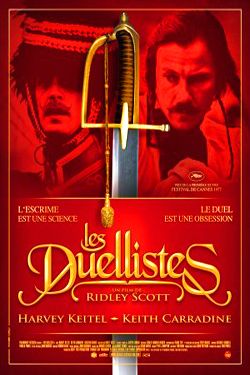

 Good review of a movie I have never even heard of.
Good review of a movie I have never even heard of.
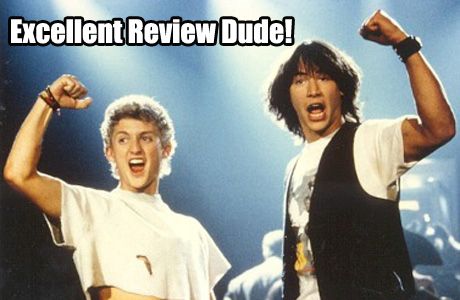
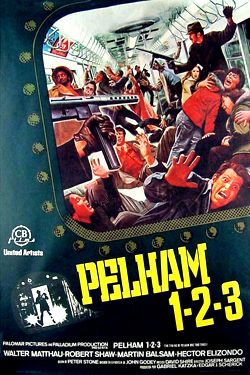
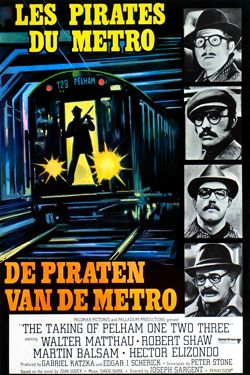
 I loved that you got my favourite quote in the review, too.
I loved that you got my favourite quote in the review, too.

